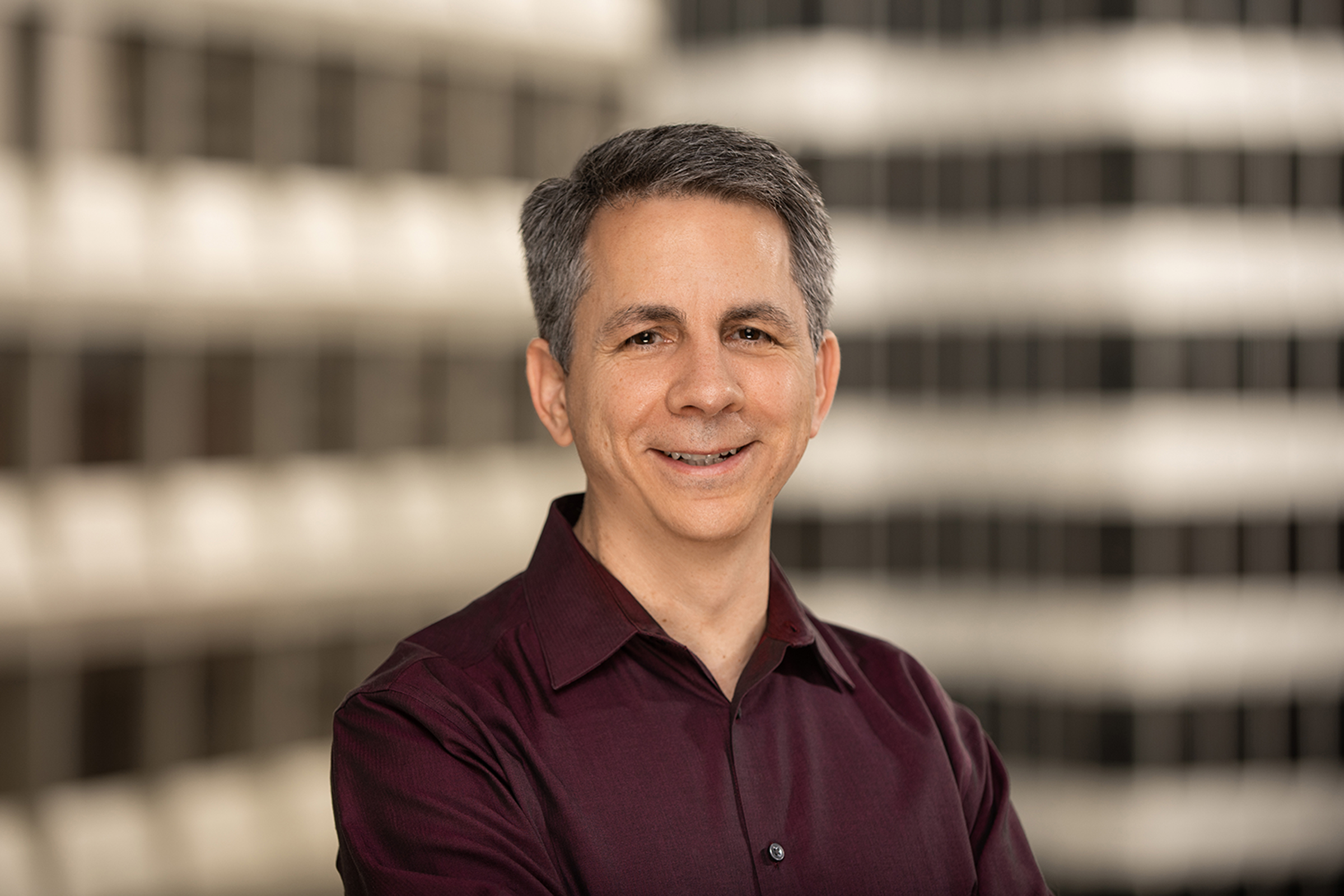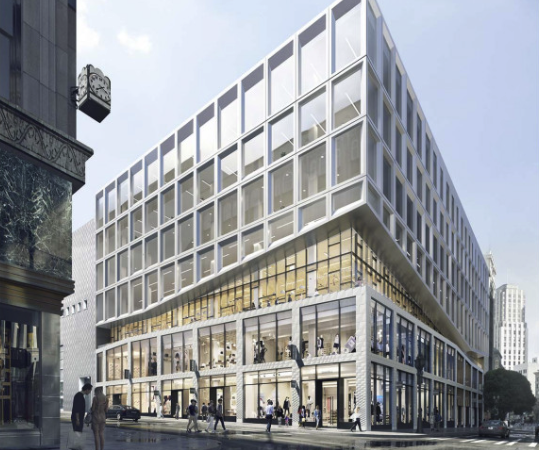
David Rossi SE
Principal
Ryan Beaton PE, QSD
AssociateStanding seven stories tall, with a Brutalist aesthetic and an aging facade, 100 Stockton in San Francisco (or Macy’s Mens) was originally designed for a single retail tenant in the early 1970s in a time when solid walls were acceptable and natural light was sometimes an afterthought. Rather than tear down this historic structure the developers tasked the design team with transforming this introverted, dated building into an extroverted, light-filled jewelbox.
 The overall project vision is to reshape 100 Stockton into a mix of retail and office space as well as add a rooftop restaurant and a wrapped outdoor terrace at the third floor. The engineering systems play a large role in this vision, so Lead Architect, Gensler collaborated with KPFF to explore options for both the site and building civil engineering and the complex structural systems required to give this Union Square icon a new life.
The overall project vision is to reshape 100 Stockton into a mix of retail and office space as well as add a rooftop restaurant and a wrapped outdoor terrace at the third floor. The engineering systems play a large role in this vision, so Lead Architect, Gensler collaborated with KPFF to explore options for both the site and building civil engineering and the complex structural systems required to give this Union Square icon a new life.
The work not only changed the building’s appearance and functionality but elevated the skills and confidence of several budding engineers.
Our structural team rapidly assessed over forty possible schemes, including interior cores and exoskeletons of various configurations. Creating this rapid response team during conceptual design encouraged creative solutions and ensured that the path taken throughout design was one that delivered a renovation and retrofit consistent with the developer’s expectations.
Associate and Structural Engineer Nick Miley shared “working on 100 Stockton was a whirlwind at first. Our team had to respond to new tenant layouts and client feedback while evaluating a complex tangle of structural constraints. I was one of four engineers tackling the analysis challenge. We learned to work collaboratively and build on each other’s ideas – no idea was too crazy to be considered. This process taught me how to think about design options with the client’s objectives in mind and the importance of letting go of my preferred option in favor of new ideas that benefit everyone. Working on this project from design through construction has been a challenging but extremely rewarding experience that has shaped the trajectory of my career.”
KPFF Civil Engineers modernized the stormwater management and added a new rainwater reuse system, to help achieve LEED platinum certification. Replacing the sidewalks renews the relationship of bustling pedestrian traffic and store entrances while complying with ADA standards. In addition, they negotiated systems design with new infrastructure for the Muni underground light rail extension adjacent to the basement level.
“Being located close to our client and design team members allowed us to interact quickly and easily. Whether it was reacting to unforeseen conditions or coordinating with a massive and on-going public infrastructure project, we were able to develop solutions in a timely manner to keep the design and construction process moving. The time spent together early has built a level of trust and understanding that has grown throughout the project.” Ryan Beaton, PE, Associate, Civil Engineer

To increase seismic resiliency, add and enlarge windows, and create more open floorplates – multiple, complimentary structural solutions were designed. These solutions included:
- an entirely new lateral system in the core of the building, including new walls with large openings at the lower levels for tenant flexibility and transitioning to buckling restrained braces (BRB’s) to allow for clear views on the office floors
- installation of perimeter beams and columns to remove thick perimeter concrete bearing walls and to create a seismic separation from the adjacent buildings
- carbon fiber wrapped gravity columns to provide ductility and mitigate earthquake damage
- removal of two levels and adding supportive steel framing, with replacement of the concrete-framed ground floor with stepped steel framing to accommodate multiple retail tenants
- replacement of the roof framing with steel framing to support the new restaurant space and landscaping
- curtain wall clad with terra cotta tiles to match the surrounding buildings
- removal of several existing columns and modification of the existing post tensioned girders, which required shoring the
entire building at every level - a horizontal steel truss cantilevering off the newly poured columns
A project this complicated has a list of unknown conditions and lessons learned too numerous to mention. One of the keys to the team’s success was to avoid the standard “problem finding”mentality in favor of a solutions-based, collaborative mindset.
Read more about this project in the March 2022 issue of Structure Magazine.
